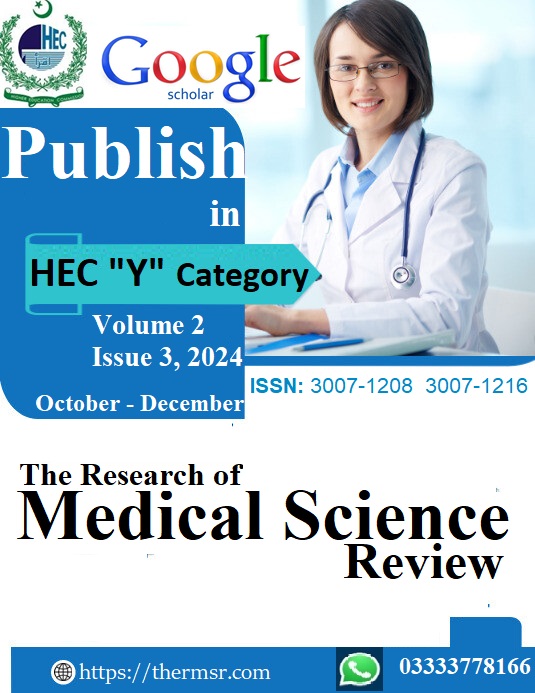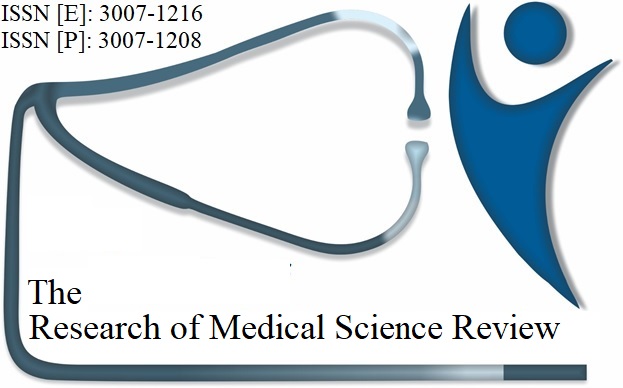COMPARISON OF DIAGNOSTIC ACCURACY OF ENDOMETRIAL SAMPLING TECHNIQUES; D&C AND PIPELLE SAMPLING IN PATIENTS OF ENDOMETRIAL HYPERPLASIA
Keywords:
COMPARISON OF DIAGNOSTIC ACCURACY OF ENDOMETRIAL, SAMPLING TECHNIQUES, D&C AND PIPELLE SAMPLING, PATIENTS, ENDOMETRIAL HYPERPLASIAAbstract
Endometrial hyperplasia, defined by the thickening of the endometrium, is a recognized precursor to endometrial cancer, especially in postmenopausal women. The precise and prompt diagnosis of this illness is essential for averting development to malignancy and facilitating successful therapy. This study sought to evaluate the diagnostic accuracy, sensitivity, specificity, and patient outcomes of two prevalent endometrial sample methods, Dilation and Curettage (D&C) and Pipelle biopsy, using hysterectomy as the gold standard. This cross-sectional study was performed at the Gynecology Department of Sir Ganga Ram Hospital in Lahore for a duration of six months. One hundred and fifty women aged 35 to 65 years, exhibiting atypical uterine hemorrhage and clinically suspected of endometrial hyperplasia, were recruited using simple random sampling. The subjects were divided evenly into two groups: 75 receiving D&C and 75 undergoing Pipelle biopsy. The data collection encompassed demographic information, clinical history, procedural attributes, histopathology results, and patient-reported outcomes. Statistical analysis was performed using SPSS Version 26.0, with quantitative variables evaluated using t-tests and categorical variables using chi-square tests. A p-value of less than 0.05 was deemed statistically significant. The mean age of participants in the D&C and Pipelle groups was 49.75 ± 8.95 years and 49.77 ± 8.94 years, respectively. Both approaches demonstrated strengths and limits in identifying endometrial hyperplasia. Pipelle biopsy revealed better sensitivity (71%) compared to D&C (55%), showing its superior capacity to detect hyperplastic lesions. However, D&C demonstrated a somewhat greater specificity (35%) compared to Pipelle (29%). Tissue adequacy was slightly superior with Pipelle sampling (49% vs to 45% in D&C). Pain scores immediately following the procedure were lower in the Pipelle group (4.82 ± 3.19) compared to the D&C group (5.17 ± 3.36), but differences in pain scores after one week were negligible. Complications were slightly more likely with Pipelle biopsy (31%) than to D&C (22%). Both groups exhibited comparable satisfaction levels (D&C: 2.82 ± 1.47, Pipelle: 2.85 ± 1.33). The outcomes of this study demonstrate that while D&C remains a solid diagnostic tool, Pipelle biopsy offers a less invasive, patient-friendly alternative with comparable diagnostic accuracy. These results have substantial implications for clinical practice, particularly in resource-limited settings or outpatient contexts where less invasive methods are sought. Future research should focus on long-term patient outcomes, cost-effectiveness, and the incorporation of patient preferences into diagnostic decision-making to further optimize the therapy of endometrial hyperplasia.Downloads
Download data is not yet available.
Downloads
Published
2025-01-21
Issue
Section
Articles
License

This work is licensed under a Creative Commons Attribution-NonCommercial-NoDerivatives 4.0 International License.
How to Cite
COMPARISON OF DIAGNOSTIC ACCURACY OF ENDOMETRIAL SAMPLING TECHNIQUES; D&C AND PIPELLE SAMPLING IN PATIENTS OF ENDOMETRIAL HYPERPLASIA. (2025). The Research of Medical Science Review, 3(1), 976-987. http://thermsr.com/index.php/Journal/article/view/472















